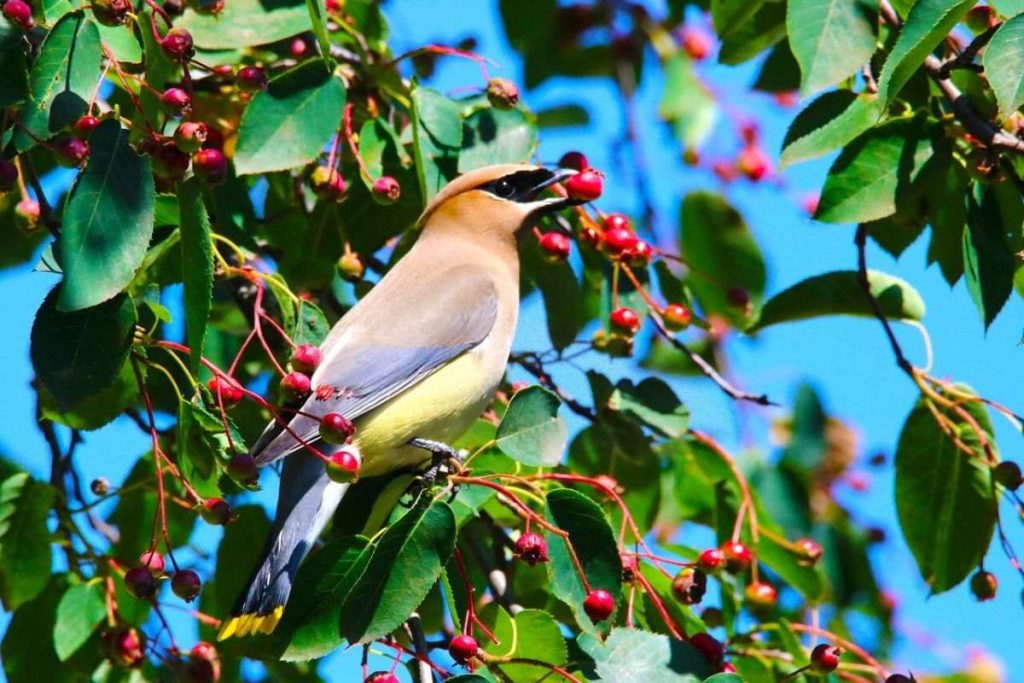If you’re like me, you love spending time outdoors surrounded by beautiful wildlife. That is by far one of the best parts of being a homesteader. One of the best ways to enjoy nature is by attracting birds to your home. There’s something about birdwatching that just brings peace to my inner soul. And ever since I got chickens, I feel like I love all birds even more and I want to do what I can to help them live their best little bird lives!
When it comes to attracting birds to your property, many people think that you need to keep a feeder full of bird seed. While this is certainly one way to bring birds in, not all birds benefit from feeders. In my opinion, it’s not a good idea to consistently have bird seed available. You don’t want birds relying on you for food, especially in the summertime when there is plenty of food available in the wild that is part of their natural diet.
There are a number of trees that attract birds that also provide shelter and safety in addition to food. Not only are these trees beautiful to look at, but birds can also help with pest control and pollination. In this blog post, we’ll talk about 12 different trees that attract birds right to your homestead. So if you’re looking for some new additions for your garden or property, be sure to check out this list!
- What to look for when selecting trees that attract birds
- 12 Trees That Attract Birds to Your Homestead
- 1. Oak (Zones 3-10)
- 2. Maple (Zones 3-9)
- 3. Red Mulberry (Zones 4-8)
- 4. Flowering Dogwood (Zones 5-8)
- 5. Birch (Zones 2-6)
- 6. Eastern Red Cedar (Zones 2-9)
- 7. Spruce (Zones 2-7)
- 8. Serviceberry (Zones 4-9)
- 9. Crabapple (Zones 3-8)
- 10. Eastern Cottonwood (Zones 2-9)
- 11. Willow (Zones 2-8)
- 12. Eastern Redbud (Zones 4-9)
- Conclusion
What to look for when selecting trees that attract birds
As organic gardeners, we understand the importance of planting species native to our areas. In a nutshell, native plants are part of the natural ecosystem in an area, and they are often a vital habitat and essential source of food for many species. Without them, many species of insects and birds cannot survive. Did you know that native oak trees support 500 species of caterpillars compared to an introduced tree like the gingko, which only supports 5? Think about how most wild birds feed insects to their babies. Without insects, you won’t have many birds.
Besides attracting insects, look for native species that provide berries, nuts and seeds. Not only will these trees attract birds, but they will also attract other cute wildlife like squirrels and chipmunks!
12 Trees That Attract Birds to Your Homestead
1. Oak (Zones 3-10)
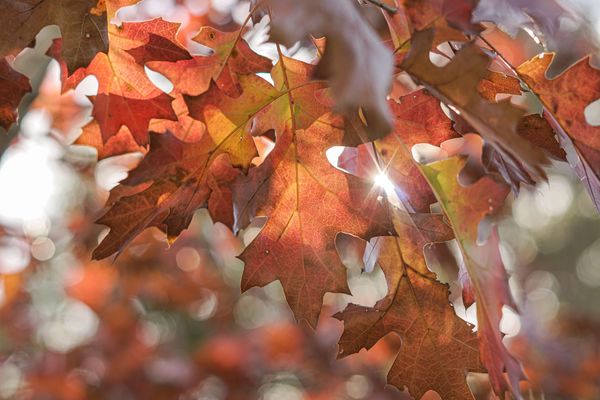
Oak trees are a great addition to any homestead, not only for their stately appearance, but also for the fact that they are one of the best trees that attract birds.
Native to North America, oak trees are an important food source for many species of birds. Oaks are naturally dense and have a heavy canopy, which makes them ideal for nesting. They also produce a large quantity of acorns, which are an important food source for many species of birds (and squirrels!) and they attract a wide variety of insects, including many butterfly and moth caterpillars. This makes oak trees an essential part of the ecosystem and a valuable asset to any bird lover’s homestead.
2. Maple (Zones 3-9)
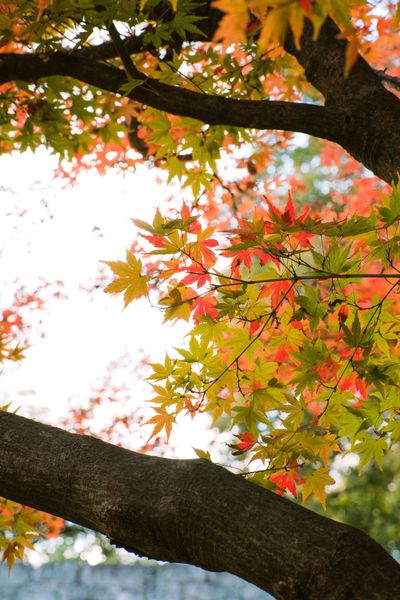
The majestic and iconic maple tree is one of the easiest trees to recognize, and it is an excellent tree that attracts birds to your home.
The maple tree is a native tree to North America and the birds that are attracted to maple trees are also native to North America. Some of the birds that are attracted to maple trees include the American goldfinch, the Baltimore oriole, the northern cardinal, and the rose-breasted grosbeak. Maple trees not only provide a beautiful landscape for your homestead, but they also provide a place for these sweet little birds to live. Birds can’t resist the many caterpillars they might find on the trees, the soft bark that is satisfying to peck into, and the maple keys in the spring that contain the seeds. And you’ll get a striking display of color in the fall when the leaves turn bright orange!
Can you tell I love maple trees?
3. Red Mulberry (Zones 4-8)
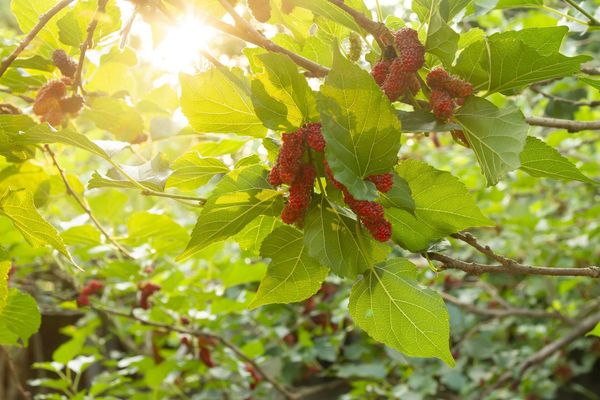
Mulberries are a favorite amongst many birds, and if you have a couple of these trees (you need a pollinated female for it to bear fruit), you’ll probably see birds there constantly. Not only do they love eating the berries, but the berries attract insects, which in turn attracts more birds. Be careful, though – mulberries stain like crazy! You do not want them overhanging any concrete or especially wood. Birds that eat the berries also have bright colored droppings that can stain as well, so you should do your own personal risk assessment for this one!
Still, red mulberries (avoid white mulberries, as they are an introduced invasive species) are delicious and are great in jams, pies and wines. They thrive in zones 4-8 in the US and the Carolinian region of Ontario, Canada.
4. Flowering Dogwood (Zones 5-8)
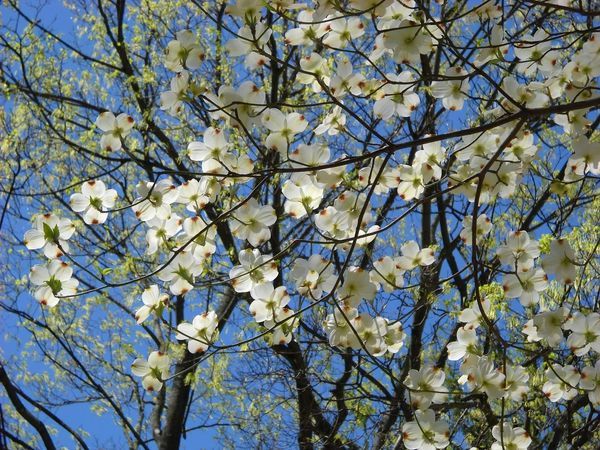
Flowering dogwood trees are beautiful, small-to-medium trees that are native to North America. They are beloved for their spectacular, showy white flowers that bloom in springtime. However, what many people don’t know is that these trees are also excellent at attracting birds to your homestead! Birds are attracted to the dogwood’s flowers, red berries and leaves. Additionally, the dogwood’s dense network of branches provides shelter and protection for birds during bad weather.
Many dogwoods are planted specifically for the purpose of providing food and shelter for birds. So if you’re hoping to see more bird activity on your property, consider adding a few dogwoods to your landscape. You and the birds will be glad you did!
5. Birch (Zones 2-6)
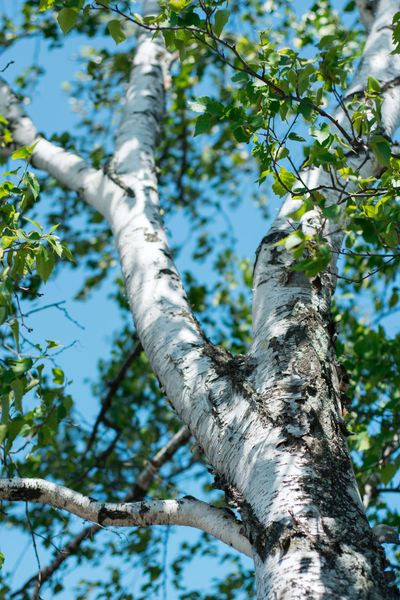
Having a few birch trees on your homestead can go a long way in attracting feathered (and furry) friends. Birch trees are a favorite of many birds, providing both food and shelter. In addition, birch trees also offer great nesting sites for birds looking to raise their young. As a result, birch trees can provide an essential role in attracting birds to your homestead.
One of the things that birch trees do to attract birds is they produce a lot of seeds. The birch tree’s seeds are especially attractive to birds like goldfinches, black-capped chickadees, blue jays and nuthatches. Birds eat the birch tree’s seeds and then help spread them around when they fly off to their next destination. Birch trees also contain a lot of sap, making them a top choice of the yellow-bellied sapsucker.
If you live in the right climate, consider growing birch trees! They actually grow pretty quickly, reaching full height in about 10 years, and they are a beautiful addition to a rural landscape.
6. Eastern Red Cedar (Zones 2-9)
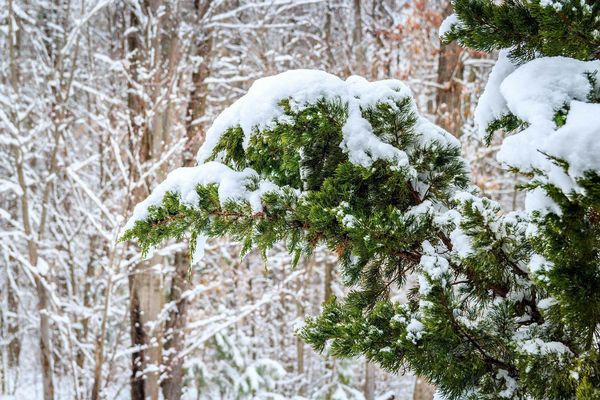
While technically a juniper and not a true cedar, the eastern red cedar is native to the eastern part of North America and is probably already growing somewhere on your property. These trees spread prolifically through open fields and along highways, and you’re probably thinking, “Why would you include such a basic, common tree in this list?” Well, evergreen trees such as this one provide a crucial source of food and shelter for many species of songbirds and game birds, especially in areas with cold winters when food is scarce. The gorgeous cedar waxwing is even named after this tree!
This tree is not to be confused with the western red cedar, which is native to British Columbia, Canada and the Pacific Northwest.
7. Spruce (Zones 2-7)
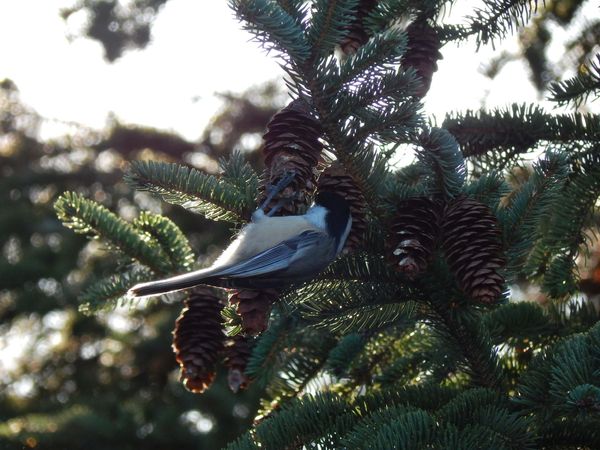
Another common evergreen tree found in many parts of Canada and the US, spruce trees are essential in areas with cold, snowy winters. This is another tree that you might question as to why I’m including it, since it grows basically everywhere. Well, like I mentioned before, evergreen trees are a crucial source of food in colder areas where food is scarce in the winter. Birds like the red crossbill, cedar waxwing and grosbeak eat the seeds from the seed-filled cones. Check out this chart that shows different species of trees and how they provide food and shelter to various species of birds!
8. Serviceberry (Zones 4-9)
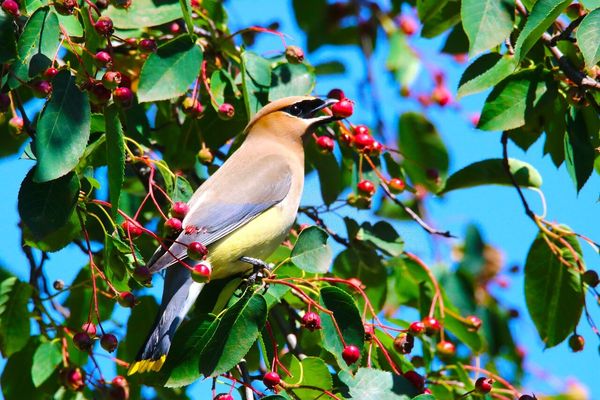
Serviceberry trees are beloved by birds for their fruits and by homeowners for their beautiful flowers in the springtime and striking scarlet leaves in the fall. We had a big serviceberry tree in our front yard growing up, and I remember there always being birds and squirrels congregating there! It was funny to hear the squirrels chattering away in disproval from up in the tree whenever a neighborhood cat was nearby.
Serviceberry trees are a type of tree that is known to attract birds to your homestead. Did you know that they are part of the rose family? The serviceberry tree is a deciduous tree that grows to be about 15-30 feet tall. The leaves of the tree are ovate-shaped and the flowers are white or pink. The berries of the serviceberry tree are a dark blue color. The serviceberry tree blooms in the springtime and the berries ripen in the summertime. The tree is a food source for many birds, such as robins, bluebirds, waxwings, and finches.
Serviceberry trees go by a few different names, depending on where you’re from, including shadbush, Saskatoon berry, juneberry, sugarplum and sarvisberry. No matter what you call them, serviceberry trees are a wonderful addition to your homestead!
9. Crabapple (Zones 3-8)
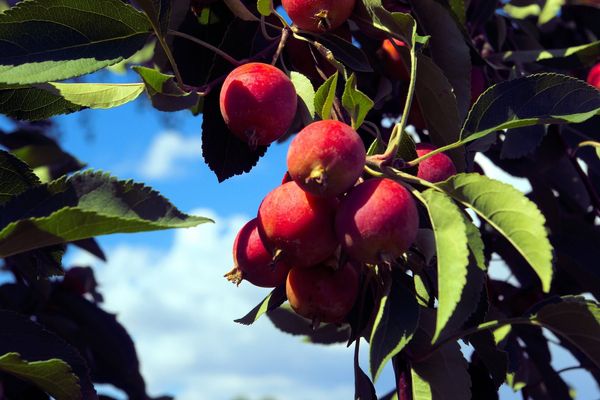
I feel like every homestead needs a couple of crabapple trees. To me, seeing and smelling the beautiful apple blossoms in the springtime is one of those joys you look forward to every year. That and when the lilacs start to bloom! We were lucky enough to get a property with an old, fully-mature crabapple tree already established. We’ve also planted two full-size apple trees this year and are hoping to slowly create a little orchard for ourselves.
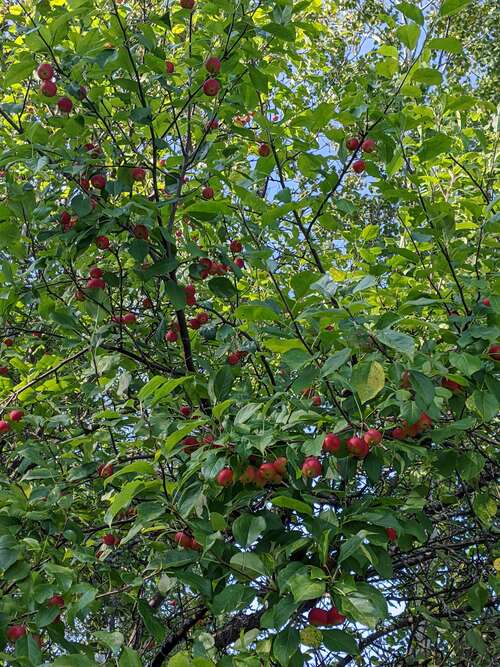
Crabapple trees are beautiful, functional trees that can provide food and shelter for wildlife while also enhancing the look of your homestead. Crabapples are a type of apple that is smaller and less sweet than the common variety. I remember eating crabapples off the neighbor’s tree on my walk home from school as a kid – I’ve always loved sour and tart things! They are also high in pectin, making them ideal for making jams and jellies.
In addition to their attractive blossoms, crabapple trees are also known for their fruit. Crabapples are a favorite food of many birds, including robins, waxwings, bluebirds, finches and cardinals. The fruit is also eaten by deer, squirrels, and rabbits.
There are a couple of things to keep in mind if you’re thinking of planting apple trees, though. One, you will need at least two different cultivars for proper pollination and fruiting. Keep in mind that a crabapple tree counts towards a full-size and vice versa! However, the more varieties you have, the better the chances of maximizing your fruit yields. Crabapples can also get very messy if you’re in an area where there isn’t a lot of wildlife to clean up all the fallen apples. Because of this, I wouldn’t recommend planting any crabapple trees close to your house, because they will attract wasps in the summer and you will have a bad time.
Other than that, crabapple trees are easy to care for and they are very hardy. If you are looking for a tree that will attract birds to your homestead and will also provide you with a food source, crabapple trees are an excellent choice.
10. Eastern Cottonwood (Zones 2-9)
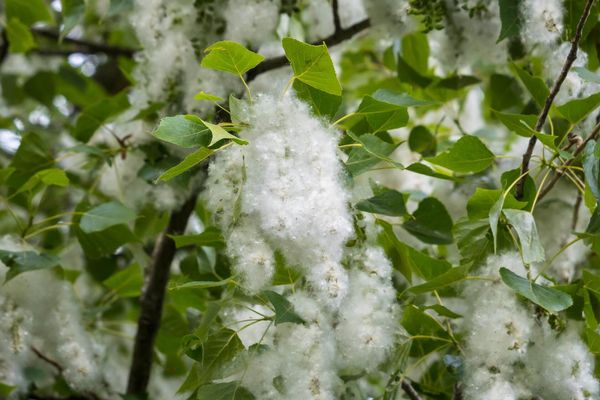
The eastern cottonwood, or any other type of poplar tree, is an excellent choice of tree that attracts birds. Poplars, which are actually part of the willow family, are widely distributed throughout the United States and Canada, large and fast growing, and have fluffy, cotton-looking tufts attached to the seeds that blow all over the place in the early summer. The eastern cottonwood is the largest of the poplar tree species and can grow to be over 100 feet tall. Birds love eating the seeds and the many insects found on the leaves, and they use the fluffy “cotton” as nesting material. The leaves are triangular and ruffle mesmerizingly in the wind. There’s something so calming about listening to the breeze blowing through a bunch of poplar trees!
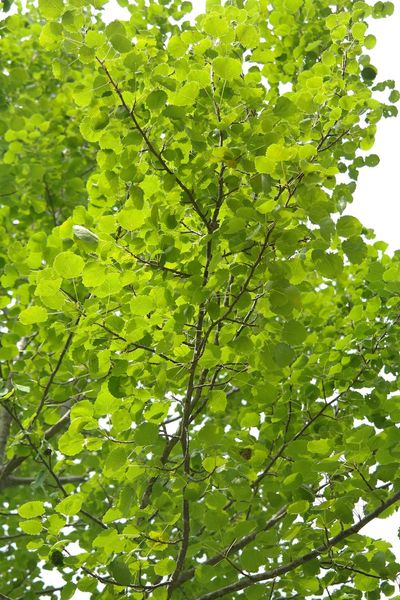
The eastern cottonwood is a popular tree for homesteaders because of its many benefits. In addition to attracting birds, this tree provides shade, privacy, and windbreak. If you’re looking for a tree that will attract birds to your homestead and provide some privacy, consider planting a row of eastern cottonwoods.
11. Willow (Zones 2-8)
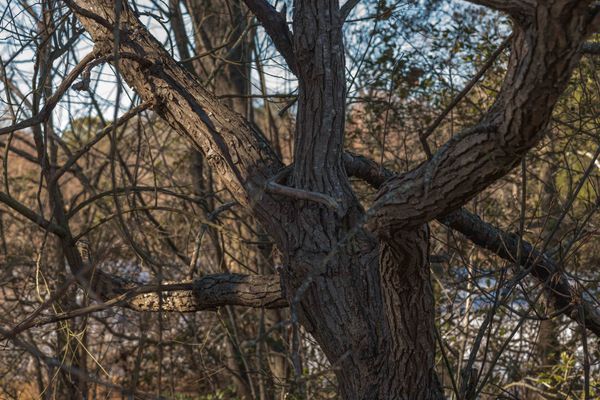
There are many types of willow trees native to North America such as the black willow, peachleaf willow and pussy willow, and they are wonderful choices of trees that attract birds, especially because of how many insects and caterpillars the trees host. Insect-loving birds such as Baltimore orioles, blue jays, pileated woodpeckers, yellow-bellied sapsuckers, warblers and many more will love hanging around willow trees!
Willow trees usually grow in wetland areas or beside bodies of water, so if you have the right conditions, consider planting some native willow trees! A word of caution, though: willow trees’ roots are extremely aggressive and fast growing – in fact, you can make your own DIY rooting hormone out of willow branches. If you’re into organic gardening like I am, this is an excellent and frugal way to make your own rooting hormone without the use of synthetic chemicals and fungicides.
Since willow trees have such an aggressive and shallow root system, I highly recommend planting them at least 50 feet away from your house, septic field, geothermal field, gas and electrical lines, well system and any other underground infrastructure. This is mostly the case for invasive non-native species like weeping willows and corkscrew willows, but it is still a good practice for any willow species. Don’t let this deter you, though! Willows are beautiful additions to homesteads with the right supporting conditions, and the birds will love them!
12. Eastern Redbud (Zones 4-9)
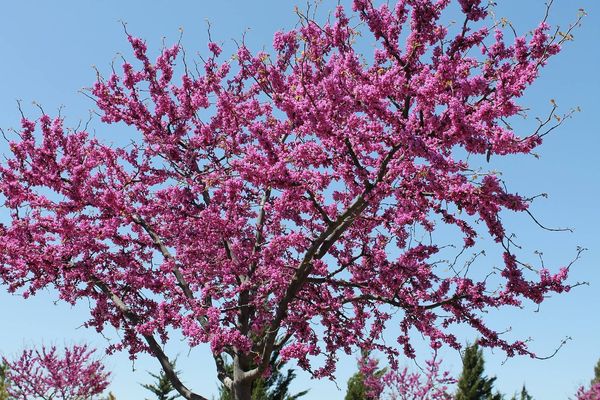
Okay, this has to be my favorite tree on this list. It makes me nostalgic – my family home growing up also has a big, beautiful redbud tree on display in the front yard – and whenever I hear “redbud tree”, my mind always goes to this song by my favorite songwriter of all time, Mark Knopfler.
Besides my own personal preference, you cannot go wrong with redbud trees when it comes to planting trees that attract birds. These trees explode with stunning pink flowers in the springtime, attracting hummingbirds, bees and butterflies all day long, and the heart-shaped leaves in the summertime provide shade and shelter for a long list of birds, including thrushes, waxwings, finches, mockingbirds, crows, nuthatches, chickadees and more. Check out this fabulous photo of a rose-breasted grosbeak on a flowering eastern redbud – I mean, come on! Who doesn’t want this in their yard?!
Conclusion
Now that you know about some of the best trees that attract birds to your homestead, get out there and plant a few! What’s your favorite tree at your place that attracts birds? Let me know in the comments below. And if you have any questions about which trees will work best in your area or how to attract more birds to your property, don’t hesitate to reach out. I’d be happy to help.
Happy homesteading and happy birdwatching!

